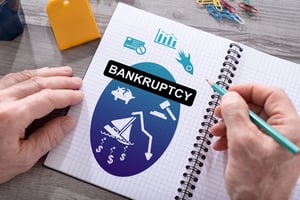 Filing Chapter 7 Bankruptcy can be a daunting prospect emotionally for many people. The Chapter 7 Bankruptcy filing basics should not be daunting to understand. Chapter 7 Bankruptcy, sometimes referred to as a “Fresh Start Bankruptcy” is like pushing a re-set button on your debts. One minute the debts are there and sometime later they are gone.
Filing Chapter 7 Bankruptcy can be a daunting prospect emotionally for many people. The Chapter 7 Bankruptcy filing basics should not be daunting to understand. Chapter 7 Bankruptcy, sometimes referred to as a “Fresh Start Bankruptcy” is like pushing a re-set button on your debts. One minute the debts are there and sometime later they are gone.
The Chapter 7 Filing process starts with the filing of a Chapter 7 Bankruptcy Petition with the bankruptcy court. The petition contains information like your full name, your social security number, address and statistical information about your case.
At the same time the petition is filed with the court, most debtors will also file several “schedules” to the petition including Schedule A, B, C, D, E, F, G, H, I and J and a Statement of Financial Affairs. These schedules lay out your assets in detail, debts in detail, your income and expenses, and many transactions that have occurred over the last 2-4 years prior to filing bankruptcy.
Once these schedules are filed with the court, the bankruptcy court assigns a Chapter 7 Trustee to your case and a “meeting of creditors” (otherwise referred to as a Section 341 meeting; referring to Section 341 of the Bankruptcy Code) is scheduled. In the vast majority of cases, creditors do not appear at the meeting of creditors.
About 60 days after the meeting of creditors, the bankruptcy court issues a notice of discharge and cases without any assets to administer are closed. If there are assets to administer in the case, the case is discharged but remains open to administer assets.
CALL NOW FOR A FREE STRATEGY SESSION FROM A MN BANKRUPTCY LAWYER AT LIFEBACK LAW FIRM
When the time is right, or when you are ready to get your life back, reach out to www.lifebacklaw.com. You will be so thankful you did.


